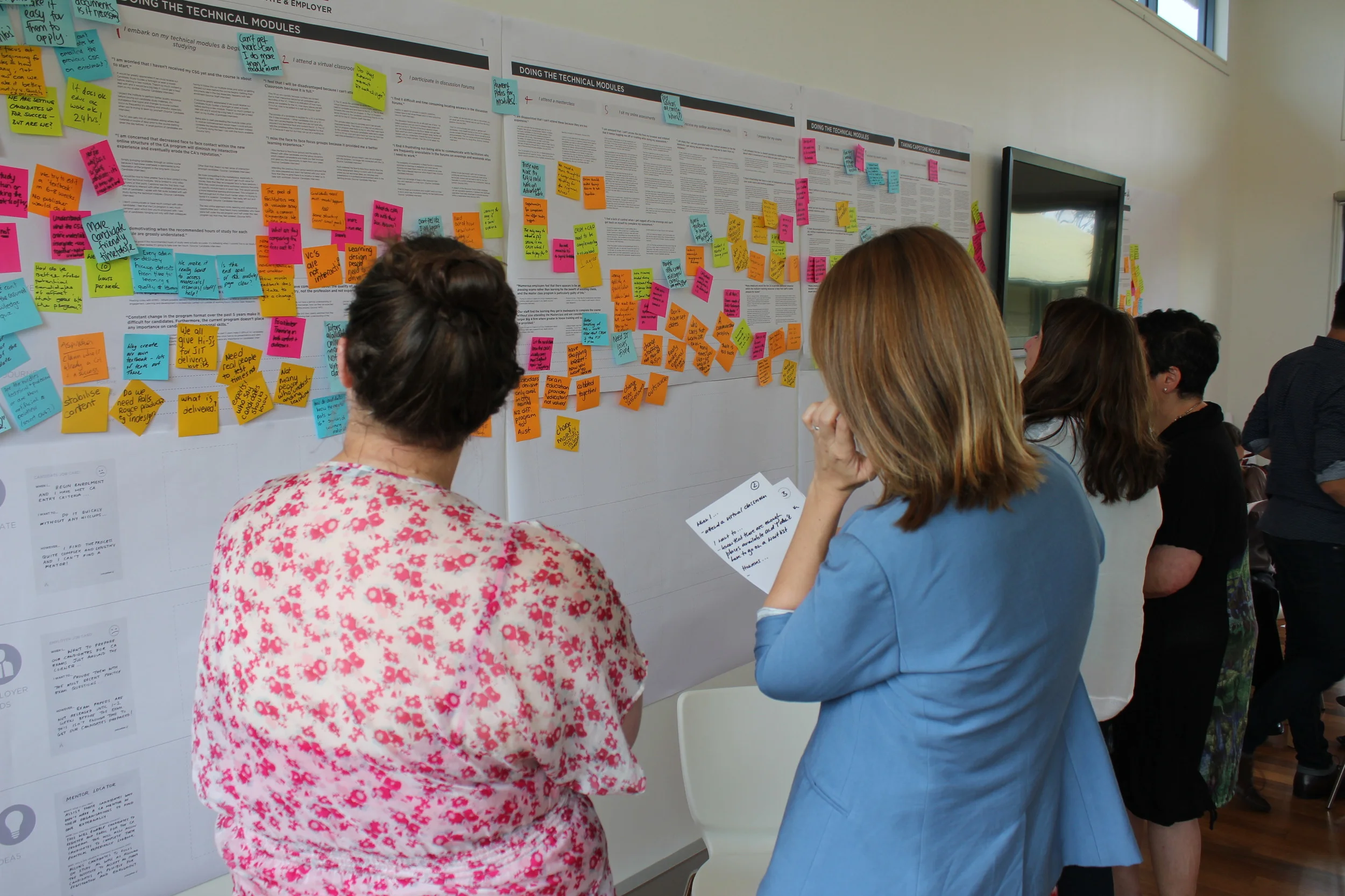
Customer Journey Map Services for Better Customer Experience
A customer journey map reveals how people actually experience your organisation, not how you think they do. It's a strategic visualisation tool that captures every touchpoint, emotion, and decision point across the complete customer relationship, transforming assumptions into actionable insights that drive measurable business improvements.
We can help you map and improve the customer journey, so every stage delivers value, builds loyalty, and drives measurable growth.
What we uncover
We uncover how customers actually move through your journey today.
Evidence-based mapping of each stage, channel, and touchpoint
Insights into customer needs, expectations, and pain points along the way
Clear view of the most critical gaps and opportunities for improvement
What we create
We create customer journey maps that are simple, human, and commercially effective.
Visual journey frameworks that make the experience clear for your teams
Prioritised improvements that focus on the moments that matter most
Roadmaps that connect customer expectations with business outcomes
What it delivers
We help you turn customer journey maps into a tool for measurable impact.
Step-by-step support to embed journey insights into daily decisions
ROI frameworks that prove the value of journey-based improvements
Governance tools to keep journeys updated and effective over time
Ready to make your customer journey work harder for your business?
Book a session with our team to uncover insights, redesign key moments, and deliver measurable results.
Customer Journey Map FAQs
What is a customer journey map?
A customer journey map is a detailed visual of how a customer moves through key stages of their relationship with your organisation, from initial awareness to renewal or exit. It shows the steps they take, the channels they use and the emotions they experience along the way. By putting these interactions into a single view, you can clearly see where the experience is working well and where it is breaking down. For leadership teams, a journey map creates a shared picture of the customer that everyone can align around.
Why is customer journey mapping important?
Customer journey mapping is important because it moves conversations away from internal assumptions and focuses them on what customers are actually experiencing. It reveals specific pain points that cause frustration, churn or unnecessary cost-to-serve, as well as moments that genuinely create value. With that clarity, you can decide which changes will have the biggest impact on satisfaction, revenue and loyalty, rather than spreading investment across low-impact initiatives. It also helps different teams coordinate their efforts, so improvements feel consistent to customers across channels.
How long does a customer journey mapping project take?
The length of a customer journey mapping project depends on the complexity of your organisation and the number of journeys in scope. A focused engagement that looks at one priority journey can be completed in around 4–6 weeks, including discovery, workshops and documentation. Broader programs that cover multiple journeys, segments or markets can take several months and may be phased to deliver value along the way. At Proto, we define clear milestones up front so you know when to expect insights, draft maps and final recommendations.
What types of organisations benefit from journey mapping?
Any organisation that wants to improve customer experience can benefit from journey mapping, but it is especially valuable where journeys are long, complex or high-stakes. This includes sectors such as financial services, utilities, transport, healthcare, government and professional services. In these environments, customers often move between digital, contact centres, branches and third parties, which makes it hard to see the full experience without a map. Journey mapping gives leaders in these organisations the clarity they need to prioritise investment and manage risk.
What do we receive at the end of a journey mapping project?
At the end of a journey mapping project you receive a set of clear, visual journey maps that can be shared widely across the business. Alongside the maps, you receive a summary of customer insights, key pain points and opportunity areas, all linked back to customer and commercial outcomes. We also provide a prioritised roadmap of CX improvements, including quick wins and longer-term initiatives, with guidance on ownership and next steps. This means your team is not left with a poster, but with a practical plan for improving the customer experience.
Areas of expertise
Human Centred Research
Drive innovation with human-centred research that places real customer needs at the heart of design. By combining qualitative insights with proven customer experience design methods, we ensure every product and service resonates deeply with your audience, building loyalty and long-term value.
Service Design & Innovation
Reimagine value delivery through service design and innovation. From redesigning key processes to introducing breakthrough experiences, we combine creativity with evidence-based frameworks, ensuring your experience design is efficient, impactful, and memorable at every touchpoint.
Customer Journey Mapping
Uncover opportunities with customer journey mapping that highlights pivotal touchpoints and pain points. Our CX design approach transforms these insights into actionable strategies, helping you craft seamless journeys that enhance satisfaction, reduce friction, and accelerate business growth.
Future State Experience Design
Stay ahead of customer expectations with future state experience design. By anticipating emerging behaviours and market shifts, we help you craft future-ready CX solutions that exceed standards, set benchmarks in your industry, and ensure your customer experience design remains competitive.
Customer Insights
Harness actionable customer insights to shape your design decisions with clarity and precision. We connect data, behaviour, and feedback into a clear narrative, ensuring every cx design initiative aligns with your customers’ evolving needs and expectations.

